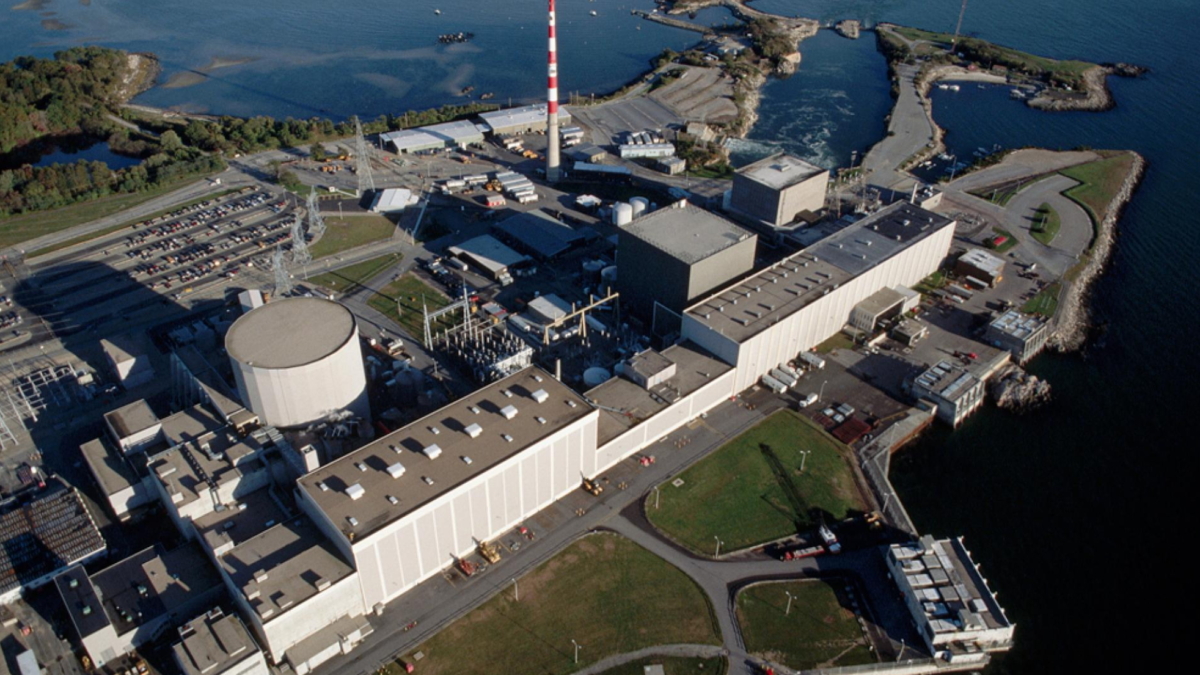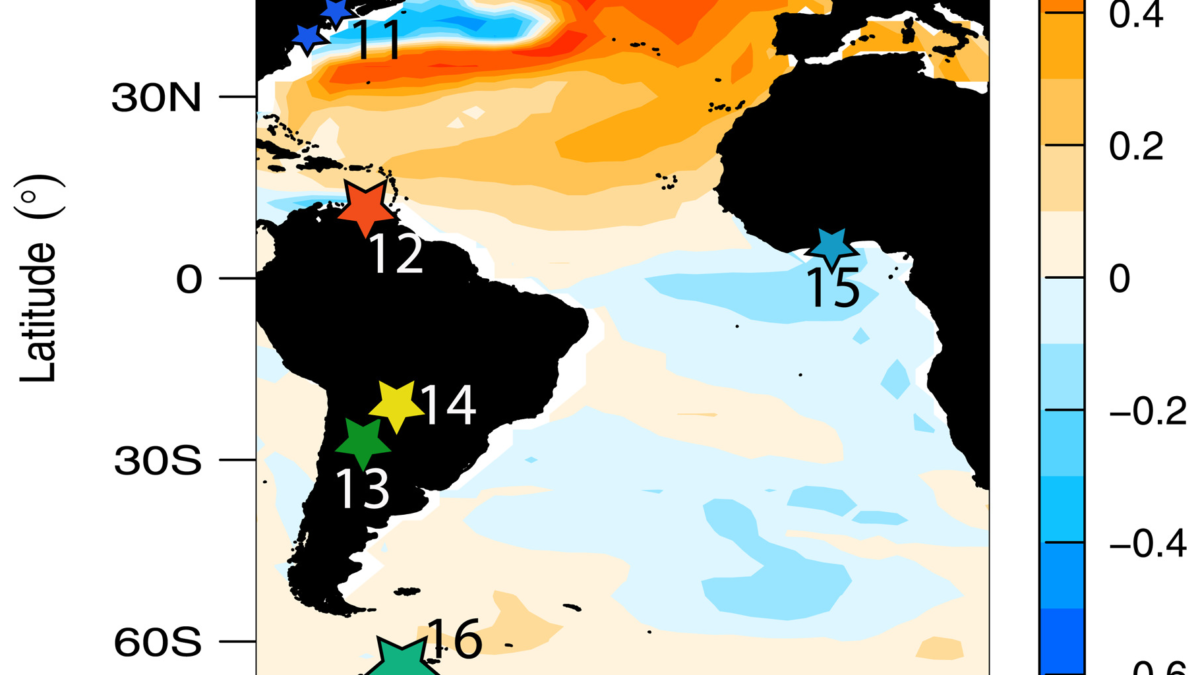Can direct air capture technology save us from global warming? “By the end of the century, DAC could require the equivalent of over half of today’s global energy needs”
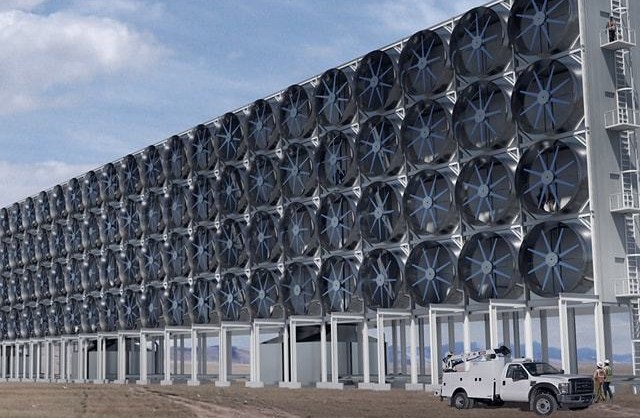
By Simon Levey
22 July 2019
(Grantham Institute) – “We’ve fallen in and out of love with outlandish technologies in the hope that they might save us from climate change,” says Dr Ajay Gambhir, Senior Research Fellow at the Grantham Institute – Climate Change and the Environment at Imperial College London. “Some are just unicorns; they don’t exist… or we haven’t discovered them yet, but this is different.”
Dr Gambhir’s research addresses how society can wean itself off fossil fuels, with a particular focus on the processes that drive down the cost of low-carbon technologies, and how to make them attractive alternatives to the high-carbon incumbents. He is also co-author of a new Nature Communications paper about a promising technology that actively removes the greenhouse gas carbon dioxide from the atmosphere.
It also takes on many different physical forms. “One design is a huge bank of fans, and another is called an artificial tree,” says Gambhir. They are examples of technologies collectively called Direct Air Capture (DAC), also known as Direct Air Carbon Capture and Storage (DACCS) and sometimes Air Carbon Capture (ACC).
Revolution-and-on
Starting in the industrial revolution, the energy produced first by coal, then oil and gas, has fuelled the growing profit, advancement and comfort of those who wield its power. Now, our addiction to fossil fuels is also causing observable ill health and environmental damage, as well as driving the global divide in wealth equality, conflict, and of course, climate change.
Despite decades of warnings from the scientific community, and now popular calls from thousands of concerned ordinary people, like teenage activist Greta Thunberg, global emissions continue to climb, and the world has already warmed by 1°C. Following on from the ambition of the Paris Agreement in 2015, in November 2018 the Intergovernmental Panel on Climate Change (IPCC) – the United Nations authority on everything climate change – released a special report on global warming of 1.5°C.
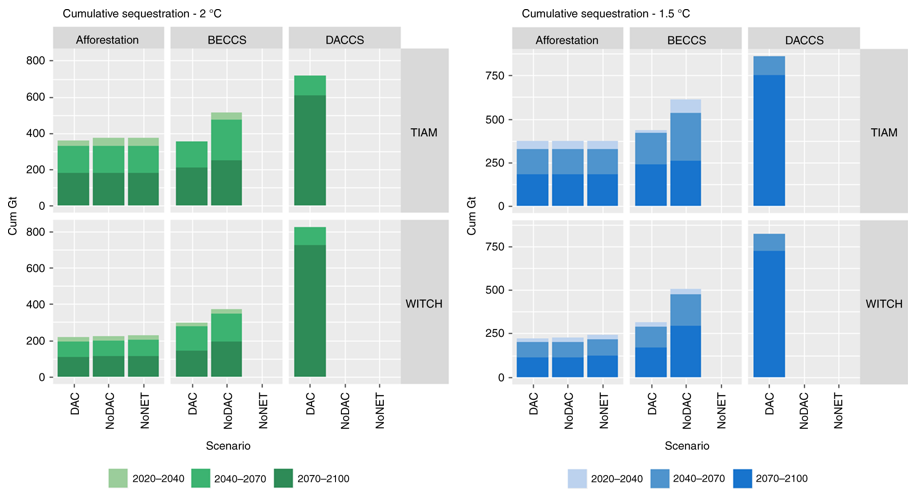
“It was a huge and significant achievement to reach a unanimous agreement at the 2015 UN climate conference in Paris, that all parties would work together to limit global warming since the mid-nineteenth century to well below 2°C and preferably to 1.5°C. At that time, however, it was not clear how the impacts of these two thresholds would differ,” says Professor Joanna Haigh, who was co-director of the Grantham Institute until her retirement earlier this year. The report lays out the potential advantages of constraining global temperature rise to 1.5°C compared with the 2°C. “Some of these are dramatic; for example, coastal flooding affecting 10 million fewer people across the world and 50% fewer people experiencing water scarcity,” she said at the time of its publication.
Limiting global warming to 1.5°C
Despite some promising signs of falling emissions thanks to energy companies in some regions withdrawing from coal power plants, many heavy industries, as well as air travel and shipping, face such high barriers to change that progress is already behind what is required to meet this target. This is even before the recent emergence of certain world powers who seek to confuse the evidence and roll back progressive actions.
Carbon dioxide itself can hang around for hundreds of years, continuing to warm the planet long after it first enters the atmosphere, so the best way to avoid further warming is a variety of measures to stop putting it there in the first place. “The IPCC report says that to meet the 1.5°C target, emissions need to be cut by about 45% by 2030. It also concludes that it will probably be necessary to implement schemes for the extraction of carbon dioxide from the air,” Haigh said.
How to capture the intangible
New technologies typically take over 20 years to reach the market, so it is good news that scientists, with some government and some private backing, have been coming up with ways to bring down carbon emissions, and some DAC pilot plants are currently being tested. For example, a Canadian venture backed by the Gates Foundation, called Carbon Engineering, is currently using a pilot plant that has been operational since 2015, with the intention of achieving full scale by 2021. In Switzerland, ClimeWorks is testing an alternative DAC plant design, again with plans for scale-up and use in combination with a geothermal power plant in Iceland, backed by European Union funding.
However, these prototypes are not without their obstacles. DAC works by passing large volumes of air across a surface impregnated with chemicals called sorbents that attach to carbon dioxide molecules. Giulia Realmonte, a junior scientist at the RFF-CMCC European Institute on Economics and the Environment in Italy, and lead author of the new study warns: “the energy required to manufacture the sorbents that remove carbon dioxide from the atmosphere is projected to be significant.”
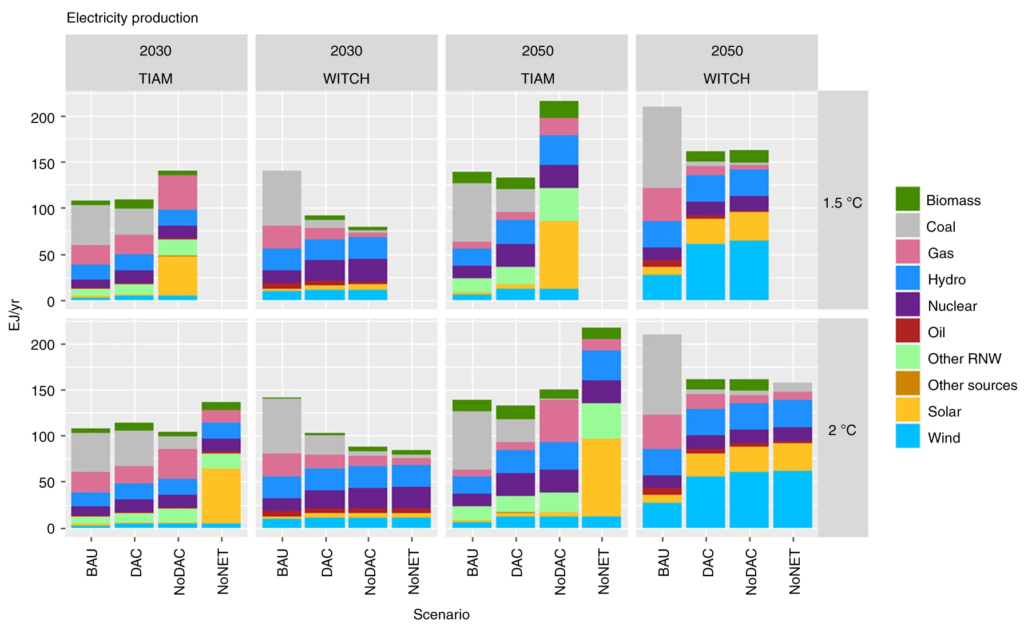
In fact, a large amount of energy is also needed to move the air through the DAC units that use fans to separate out the carbon dioxide once it has been captured. “Our study shows that by the end of the century, DAC could require the equivalent of over half of today’s global energy needs if it is the dominant carbon dioxide removal technology,” says Gambhir. Some might question whether this is a good use of energy if, for example, the supply from coastal power plants is threatened as climate change causes rising sea levels.
Whatever design they take, DAC plants could theoretically be built anywhere, unlike their cousins Carbon Capture and Storage (CCS), which remove carbon dioxide directly from the flues of power plants or heavy industries, like cement manufacturing plants. In both techniques, carbon dioxide is piped away as a concentrated liquid to be used in industry or stored underground, commonly in either a depleted oil field, or an underwater saline aquifer. However, given the large amounts of heat needed to operate some DAC plants, it might make more sense to locate them near sources of waste heat, such as from industrial plants, which would significantly improve the running costs.
Amongst other considerations around the viability of building large-scale DAC are the rate the technology can realistically be deployed, which the new study shows to eclipse concerns about its cost or efficiency. Another is the manufacture of sorbents, which can involve toxic chemicals, and could raise concerns about managing local environmental pollution. While time is pressing on the climate emergency, Gambhir and his co-authors recommend that in-depth analysis is needed to understand these implications before they arise.
Who rules the air?
There are, of course, moral and ethical questions about who should (or should not) be altering the composition of the atmosphere – which shows no regard for human boundaries – although the same could also be said for those continuing to pump out greenhouse gases in the face of stark evidence linking this to global warming. Yet, conversations about the various ways of artificially ‘geo-engineering’ the atmosphere are relatively immature in research or relevant fora such as the United Nations.
At the most low-tech end of the spectrum, mass-tree planting is an attempt to remove carbon dioxide from the atmosphere. However, one recent study suggesting that a billion hectares of trees could save us 20 years of emissions was criticised as hugely optimistic, and at best only be part of a global climate solution. At the other end are completely untested solutions, with potentially unexpected and globe-spanning effects, such as arrays of space-bound mirrors to deflect the sun’s radiation, promoting the growth of polar sea-ice, or seeding the ocean with iron to encourage phytoplankton that absorb more carbon dioxide. Few serious scientists like to entertain these ideas, preferring to concentrate on solutions that are less obviously risky.
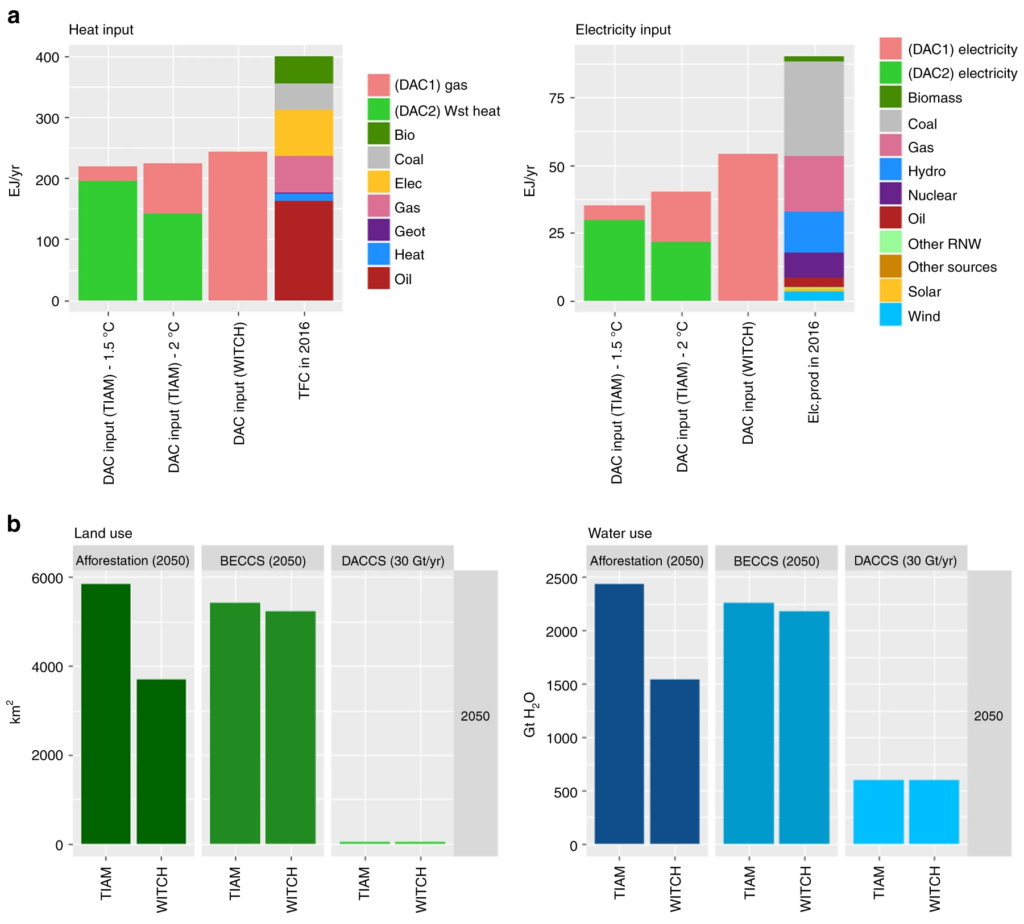
“The overall land, water and societal impact of DAC plants can be very small compared to other technologies which remove carbon dioxide from the atmosphere,” says Gambhir. For example, DAC units can be made into high towers, thereby minimising the land area that they take up. Given their preferred location among the industrial heartlands, one can also imagine the new opportunities that investment in DAC could offer to communities let down by job losses in heavy industries or fossil fuel extraction.
Legislation to run the nation
In June this year, the Prime Minister Theresa May announced historic plans to end UK carbon emissions by 2050 when she visited Imperial, making the UK the first G7 nation to legislate for net zero emissions. “This country led the world in innovation during the Industrial Revolution, and now we must lead the world to a cleaner, greener form of growth. Standing by is not an option. Reaching net zero by 2050 is an ambitious target, but it is crucial that we achieve it to ensure we protect our planet for future generations,” she said.
While some studies confidently state say that immediately halting greenhouse gas emissions would probably save us from global warming of more than 1.5 °C, few experts think it is very likely, having carried out numerous calculations that take into account the market economics, the rate of technological development and the kind of incentives that political forces can introduce. “Without concerted and swift international action to reduce emissions of greenhouse gases, the 1.5°C threshold is likely to be passed by 2040,” says Professor Haigh, who wrote to the Prime Minister urging her to enshrine the UK target into law.
Realistic expectations
If innovation and testing continue at the current pace, it would be realistic to expect to see large-scale DAC plants capturing carbon dioxide from the atmosphere in the next decade. For it to play a significant role in meeting the Paris Agreement goal (of limiting global warming to well below 2°C) this may need to be really large. If aiming for 1.5°C, DAC capacity would need to grow from one to 30 Gigatonnes of carbon dioxide (a thirty-fold increase) over 20 years, which is almost 20% per year.
“This is a major challenge, but there are historical precedents for such rapid technological growth in aeroplanes, solar panels, and wind turbines,” says Gambhir. Still quite a challenge, especially for a technology that is not delivering a tangible service unless the market for carbon dioxide suddenly takes off.
In the meanwhile, since DAC is not yet available for large-scale deployment, Gambhir and his colleagues have simulated its take-up, along with the implications for emissions reductions and energy use, in their Nature Communications study. “If we rely too heavily on this technology, and it fails to deliver on its promises, then we will overshoot our Paris Agreement targets, possibly quite significantly,” the co-authors warn in a press release. “There’s only one way to test it reliably, and that’s to get DAC deployed and scaling up as quickly as possible, assessing its impacts along the way so that any adverse effects can be identified as early as possible,” Gambhir says. In the meantime, he and his co-authors caution that DAC cannot replace action to immediately cut greenhouse gas emissions, but at best, it can complement our efforts to achieve the Paris Agreement goals.
Direct air capture: could this new technology save us from climate change?
An inter-model assessment of the role of direct air capture in deep mitigation pathways
ABSTRACT: The feasibility of large-scale biological CO2 removal to achieve stringent climate targets remains unclear. Direct Air Carbon Capture and Storage (DACCS) offers an alternative negative emissions technology (NET) option. Here we conduct the first inter-model comparison on the role of DACCS in 1.5 and 2 °C scenarios, under a variety of techno-economic assumptions. Deploying DACCS significantly reduces mitigation costs, and it complements rather than substitutes other NETs. The key factor limiting DACCS deployment is the rate at which it can be scaled up. Our scenarios’ average DACCS scale-up rates of 1.5 GtCO2/yr would require considerable sorbent production and up to 300 EJ/yr of energy input by 2100. The risk of assuming that DACCS can be deployed at scale, and finding it to be subsequently unavailable, leads to a global temperature overshoot of up to 0.8 °C. DACCS should therefore be developed and deployed alongside, rather than instead of, other mitigation options.
An inter-model assessment of the role of direct air capture in deep mitigation pathways
